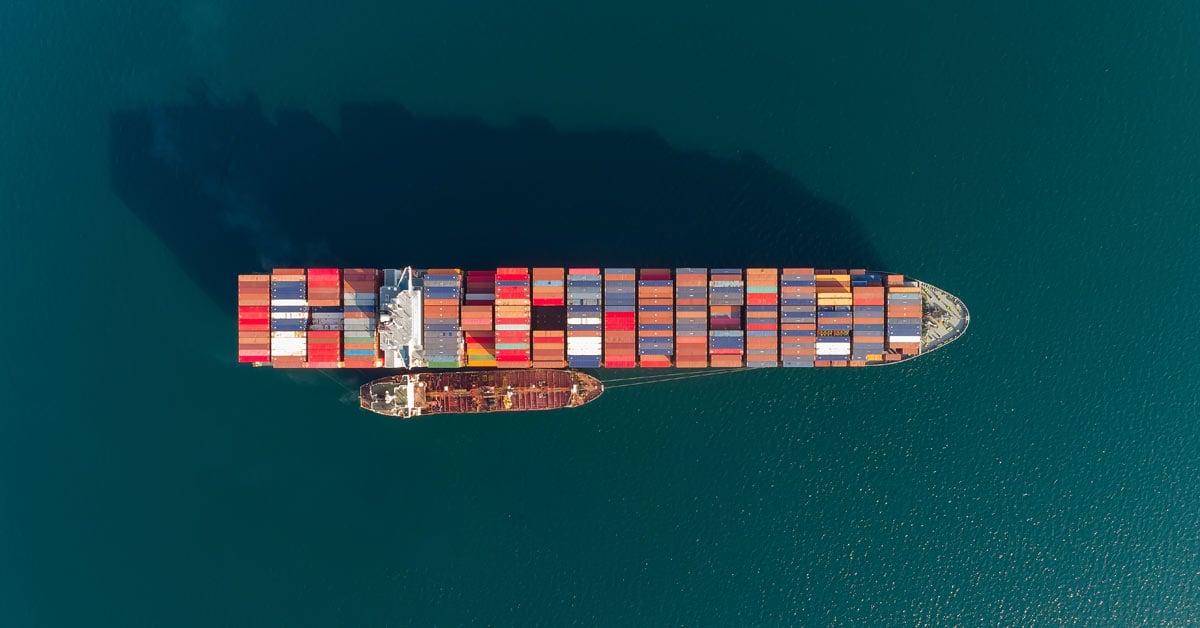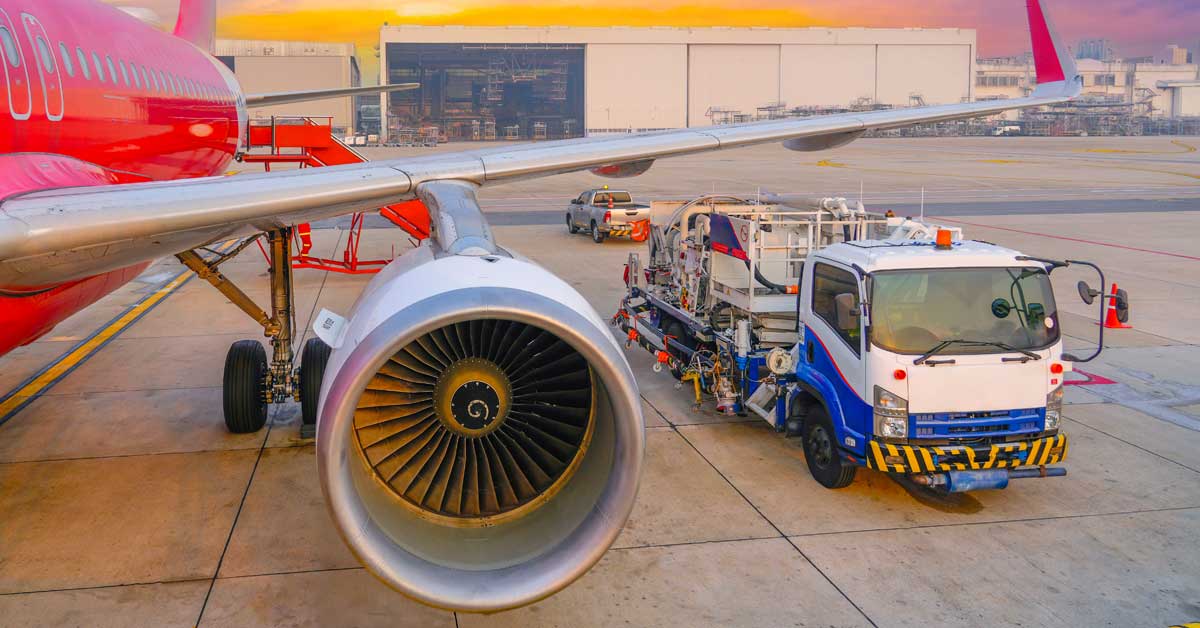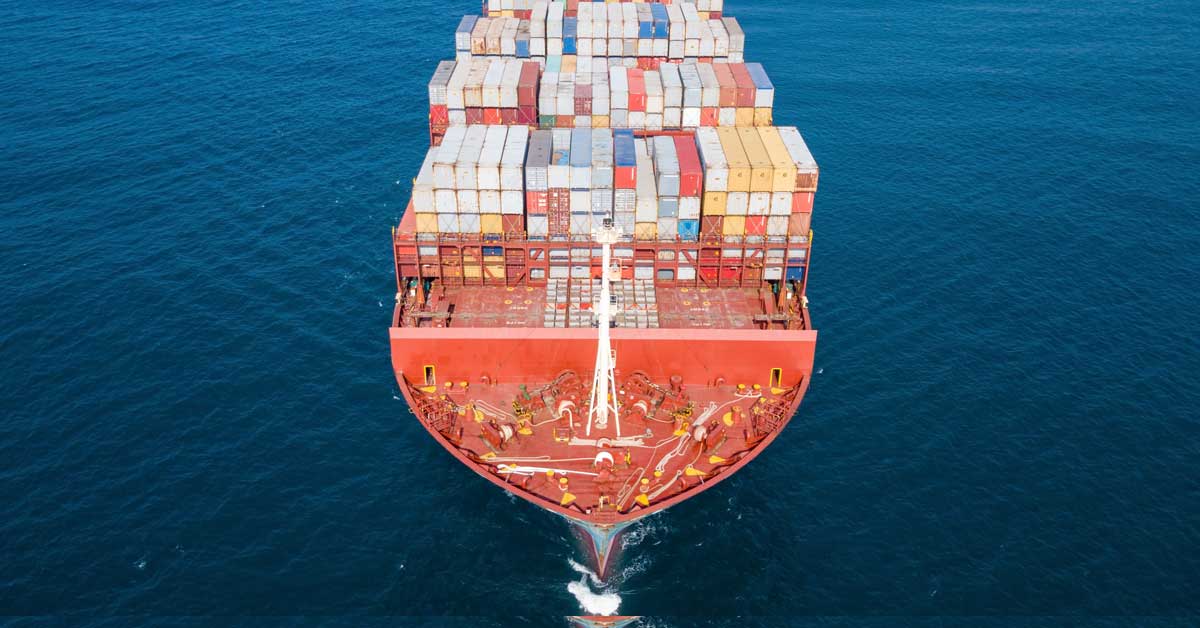3 min read
Bio-Bunkering: A Cleaner Course for the Maritime Sector
ResourceWise
:
May 30, 2025 2:55:48 PM

As climate urgency grows and emissions targets become more stringent, biofuels are taking on a starring role in the transition to sustainable energy. Their flexibility, drop-in potential, and circular sourcing make them a critical piece of the puzzle.
But one of the most emissions-intensive (and difficult to decarbonize) sectors has now firmly set its sights on biofuels: the maritime industry.
The shipping sector accounts for roughly 3% of global greenhouse gas emissions according to the International Maritime Organization (IMO). And as pressure mounts for the industry to align with global decarbonization goals, biofuels offer one of the most practical and immediate paths forward. Enter: bio-bunkering—a rising trend that is reshaping the marine biofuel market.
What is Bio-Bunkering?
Bio-bunkering refers to the practice of supplying ships with bio-based renewable fuels, either as pure biofuels or as part of a blended fuel mixture, to power their engines. In simple terms, it’s bunkering (refueling a vessel) with marine biofuel instead of conventional fossil-derived marine fuels like heavy fuel oil (HFO) or marine gas oil (MGO).
But what is biofuel, exactly? Biofuels are fuels produced from renewable, biological sources—such as used cooking oil, animal fats, or plant-based feedstocks. In the marine sector, these fuels are often refined into biodiesel, renewable diesel, or even more advanced drop-in fuels that can replace fossil fuels without modifying ship engines.
Why does this matter? Because bio-bunkering allows shipping operators to substantially lower lifecycle emissions, using renewables without waiting for large-scale infrastructure changes or propulsion technology overhauls.
Where is Bio-Bunkering Taking Place?
The list of bio-bunkering hubs is growing fast, fueled by regulatory pressure, industry commitments, and technological readiness. Early adopters include:
- Rotterdam (Netherlands): One of the most active bio-bunkering ports globally, supporting widespread use of B20–B100 blends.
- Singapore: A global bunkering hub that has successfully completed trials of B24 biodiesel and is developing certification frameworks.
- Panama: Panama has emerged as a strategic bio-bunkering hub thanks to its central trade route position and proactive blending programs.
- Northern Europe and Scandinavia: Denmark and Sweden have seen increased uptake due to supportive government policies and close proximity to biofuel suppliers.
As engine compatibility improves and logistics become more streamlined, marine biofuel suppliers are expanding into new regions. This, in turn, creates more opportunities for fleets to bunker with sustainable fuels.
What are Examples of Biofuel Used in Bio-Bunkering?
Several types of biofuels are now making their way into the marine biofuel supply chain. What is an example of biofuel used in ships today? Here are a few:
- FAME (Fatty Acid Methyl Esters): A common form of biodiesel produced from waste oils or animal fats. It’s often blended with fossil fuels.
- HVO (Hydrotreated Vegetable Oil): A renewable diesel fuel with properties very similar to fossil diesel, making it compatible with marine engines.
- Bio-LNG (Liquefied Bio-Methane): Gaining traction as a lower-emissions alternative in LNG-fueled vessels.
- Advanced Biofuels and e-Fuels: Still emerging, but expected to play a growing role as technology and production scale improve.
The fuels vary in availability, cost, and emissions performance. However, they all aim to reduce the carbon intensity of marine transport.
What are the Advantages of Bio-Bunkering?
Switching to bio-bunkering or even partial blending offers a number of clear benefits:
- Lower GHG Emissions: Biofuels can reduce lifecycle carbon emissions by 60–90% compared to fossil fuels.
- Drop-in Compatibility: Many marine biofuels can be used in existing engines and bunkering infrastructure with minimal modifications.
- Regulatory Compliance: Helps shipowners meet IMO emissions targets, EU Fit for 55 mandates, and FuelEU Maritime regulations.
- Brand and ESG Value: Operators using marine biofuel can report lower Scope 3 emissions and meet customer sustainability expectations.
In short, it’s a practical decarbonization solution that aligns environmental responsibility with operational efficiency.
What are the Disadvantages of Bio-Bunkering?
Of course, bio-bunkering isn’t without its challenges. Some of the most common concerns include:
- Cost Premiums: Biofuels are currently 20% to 100% more expensive than conventional marine fuels depending on type and region.
- Limited Availability: Not all ports offer marine biofuel, but this is changing rapidly as infrastructure expands.
- Fuel Quality Variability: Inconsistent blending standards or feedstock quality could negatively impact vessel performance.
- Compatibility Concerns: Although drop-in ready for many vessels, some older engines or auxiliary systems may require tweaks for bio-bunkering.
These points are often raised when people ask, “What is the downside of biodiesel?” or “What are the risks of biodiesel?” And these concerns are especially valid in critical, long-haul maritime operations. Fortunately, advancements in fuel testing, certification, and blending guidelines are addressing these concerns head-on.
Why is Bio-Bunkering Important?
As the marine industry confronts rising emissions pressure, bio-bunkering stands out as one of the most immediately actionable solutions. It bridges the gap between today’s fossil-heavy systems and tomorrow’s zero-carbon aspirations.
Whether used as a transitional fuel or long-term option, marine biofuel is proving that low-emissions shipping is more than just a goal. It’s a course we’re already navigating.
Bio-bunkering won’t solve all marine-based sustainability challenges alone. But as regulators tighten the screws and shipping giants set carbon targets, the case for integrating sustainable marine biofuel becomes even more essential.





